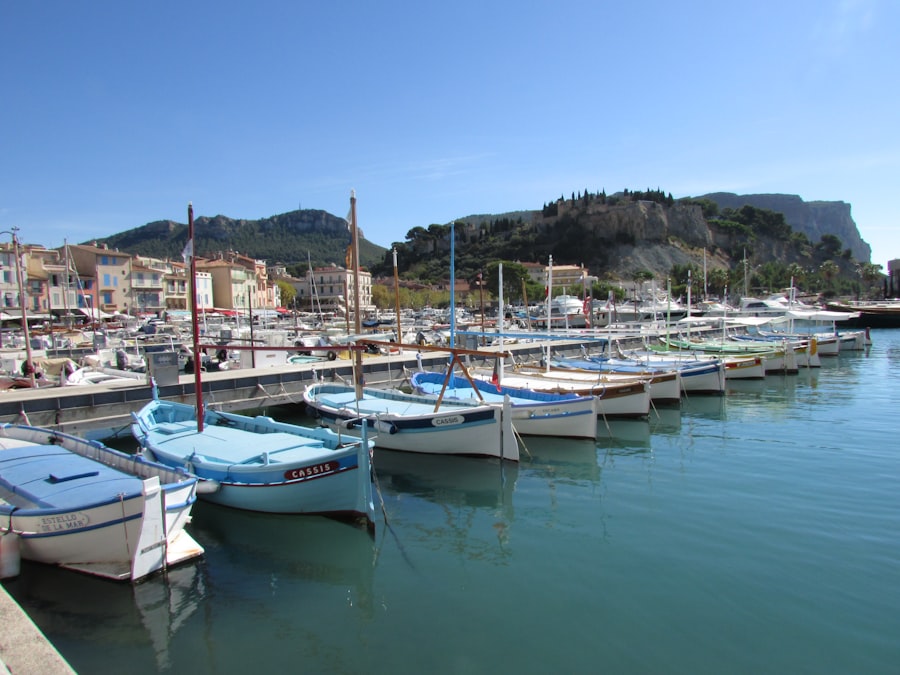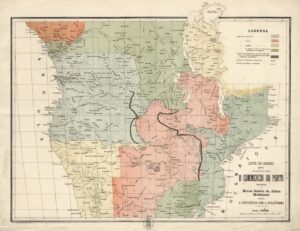India’s coastline, stretching over 7,500 kilometers, is dotted with vibrant cities that have historically served as crucial nodes in maritime trade. These coastal trade cities, such as Mumbai, Chennai, Kolkata, and Kochi, have not only facilitated the exchange of goods but have also been melting pots of culture, commerce, and innovation. The strategic location of these cities along major shipping routes has enabled them to thrive as commercial hubs, attracting traders from various parts of the world.
The significance of these cities extends beyond mere economic transactions; they are integral to India’s identity and heritage, reflecting a rich tapestry of historical interactions and cultural exchanges. The coastal trade cities of India are characterized by their unique geographical advantages, which have shaped their development over centuries. The natural harbors and deep-water ports have made them ideal for shipping activities, allowing for the easy import and export of goods.
Additionally, these cities have been pivotal in the establishment of trade networks that connect India with other regions, including Southeast Asia, the Middle East, and Europe. The bustling markets and vibrant port activities in these cities are a testament to their enduring legacy as centers of trade and commerce.
Key Takeaways
- India’s coastal trade cities have played a significant role in the country’s economic development and cultural exchange.
- The historical evolution of coastal trade in India dates back to ancient times, with cities like Mumbai, Chennai, and Kolkata serving as major trade hubs.
- Colonial rule had a profound influence on coastal trade cities, leading to the establishment of port cities and the introduction of new trading practices.
- Modernization and globalization have transformed coastal trade in India, with the implementation of advanced infrastructure and the integration of global trade networks.
- Despite the opportunities presented by modernization and globalization, coastal trade cities in India also face challenges such as environmental degradation, infrastructural limitations, and competition from other trade routes.
Historical Evolution of Coastal Trade in India
The roots of coastal trade in India can be traced back to ancient times when maritime activities were essential for the exchange of goods and ideas. Archaeological evidence suggests that Indian traders were engaged in maritime commerce as early as 3000 BCE, with significant trade links established with civilizations such as Mesopotamia and Egypt. The Indus Valley Civilization, with its advanced urban planning and sophisticated trade practices, laid the groundwork for future coastal trading activities.
Ports like Lothal emerged as prominent trading centers, facilitating the export of textiles, beads, and spices. As time progressed, the coastal trade landscape evolved significantly. The arrival of various dynasties, including the Mauryas and the Cholas, further enhanced maritime trade.
The Chola Empire, in particular, was known for its naval prowess and established extensive trade routes across Southeast Asia. The flourishing trade during this period was marked by the exchange of not only goods but also cultural influences, leading to the spread of Indian art, religion, and philosophy across the region. The establishment of trading posts by Arab and European traders during the medieval period further transformed the dynamics of coastal trade in India.
Influence of Colonial Rule on Coastal Trade Cities

The advent of colonial rule in India brought about profound changes in the coastal trade cities. The Portuguese were among the first Europeans to establish a foothold in India during the 15th century, followed by the Dutch, French, and British. The British East India Company played a pivotal role in reshaping the coastal trade landscape by monopolizing trade routes and imposing tariffs that favored British interests.
This led to significant alterations in local economies and disrupted traditional trading practices. Under colonial rule, ports such as Mumbai (then Bombay) and Kolkata (then Calcutta) were developed into major trading hubs to facilitate the export of raw materials to Britain. The construction of railways and roads further integrated these coastal cities into a broader colonial economy.
However, this integration often came at a cost; local industries suffered due to competition from British manufactured goods, leading to economic dislocation for many communities. The colonial period also saw the emergence of a new class of Indian merchants who adapted to the changing economic landscape, navigating the complexities of colonial trade policies while striving to maintain their businesses.
Modernization and Globalization of Coastal Trade in India
In recent decades, India’s coastal trade cities have undergone significant modernization driven by globalization and technological advancements. The liberalization of the Indian economy in the 1990s opened up new avenues for trade and investment, leading to a resurgence in maritime activities. Ports such as Mundra and Jawaharlal Nehru Port Trust (JNPT) have been upgraded with state-of-the-art facilities to accommodate larger vessels and streamline cargo handling processes.
This modernization has positioned India as a key player in global supply chains. The rise of e-commerce has also transformed coastal trade dynamics. With the increasing demand for quick delivery and efficient logistics solutions, coastal cities have become critical nodes for distribution networks.
Companies like Amazon and Flipkart have established fulfillment centers in proximity to these ports to facilitate rapid order processing and shipping. Furthermore, initiatives like “Make in India” have encouraged domestic manufacturing, leading to increased exports through coastal trade routes. This shift towards a more integrated global economy has not only enhanced trade volumes but has also created new employment opportunities in logistics and related sectors.
Challenges and Opportunities for Coastal Trade Cities in India
Despite the promising developments in coastal trade cities, several challenges persist that could hinder their growth potential. One significant issue is infrastructure inadequacy; while some ports have been modernized, many others still face congestion and inefficiencies that can delay shipping times and increase costs for businesses. Additionally, environmental concerns related to pollution and habitat destruction pose threats to the sustainability of these coastal regions.
The impact of climate change is also becoming increasingly evident, with rising sea levels threatening port infrastructure and coastal communities. However, these challenges also present opportunities for innovation and development. The Indian government has recognized the importance of sustainable practices in coastal trade and has initiated various programs aimed at enhancing port infrastructure while minimizing environmental impact.
Investments in green technologies and renewable energy sources can help mitigate some of the adverse effects associated with traditional shipping practices. Moreover, fostering partnerships between public and private sectors can lead to more efficient logistics solutions that address current bottlenecks while promoting sustainable growth.
Future Prospects and Sustainability of Coastal Trade in India

Looking ahead, the future prospects for India’s coastal trade cities appear promising yet complex. As global trade continues to evolve, these cities must adapt to changing market dynamics while prioritizing sustainability. The integration of digital technologies such as blockchain for supply chain transparency and artificial intelligence for predictive analytics can enhance operational efficiency within these ports.
Embracing smart port initiatives will not only streamline processes but also improve overall competitiveness on a global scale.
Coastal cities must balance economic growth with environmental stewardship by implementing practices that protect marine ecosystems while promoting responsible resource management.
Initiatives aimed at reducing carbon footprints through electrification of port operations or investment in alternative fuels can contribute significantly to achieving sustainability goals. Furthermore, engaging local communities in decision-making processes will ensure that development efforts are inclusive and beneficial for all stakeholders involved. In conclusion, India’s coastal trade cities stand at a crossroads where historical legacies meet modern challenges and opportunities.
Their evolution from ancient trading hubs to contemporary centers of global commerce reflects not only economic transformations but also cultural exchanges that continue to shape India’s identity on the world stage. As these cities navigate the complexities of globalization while striving for sustainability, they hold immense potential to contribute significantly to India’s economic growth in the years to come.
In exploring the rich cultural and philosophical traditions of India, one cannot overlook the profound insights of thinkers like Rabindranath Tagore and Sarvepalli Radhakrishnan. Their philosophies of humanism, intuition, and man’s destiny offer valuable perspectives on the development of India’s coastal trade cities. For a deeper understanding of their ideas, one can delve into the article Exploring the Philosophies of Tagore and Radhakrishnan: Humanism, Intuition, and Man’s Destiny.
FAQs
What are India’s coastal trade cities?
India’s coastal trade cities are major urban centers located along the country’s coastline that have historically played a significant role in maritime trade and commerce.
What is the significance of India’s coastal trade cities?
India’s coastal trade cities have been important hubs for trade, commerce, and cultural exchange for centuries, connecting the country to the rest of the world through maritime routes.
How have India’s coastal trade cities contributed to the country’s development?
India’s coastal trade cities have contributed to the country’s development by facilitating trade, fostering economic growth, and serving as centers of cultural and intellectual exchange.
What are some examples of India’s coastal trade cities?
Some examples of India’s coastal trade cities include Mumbai, Chennai, Kolkata, Kochi, and Visakhapatnam, among others.
How have India’s coastal trade cities evolved over time?
India’s coastal trade cities have evolved over time from ancient port towns to modern urban centers, adapting to changes in trade patterns, technology, and global economic trends.






















+ There are no comments
Add yours